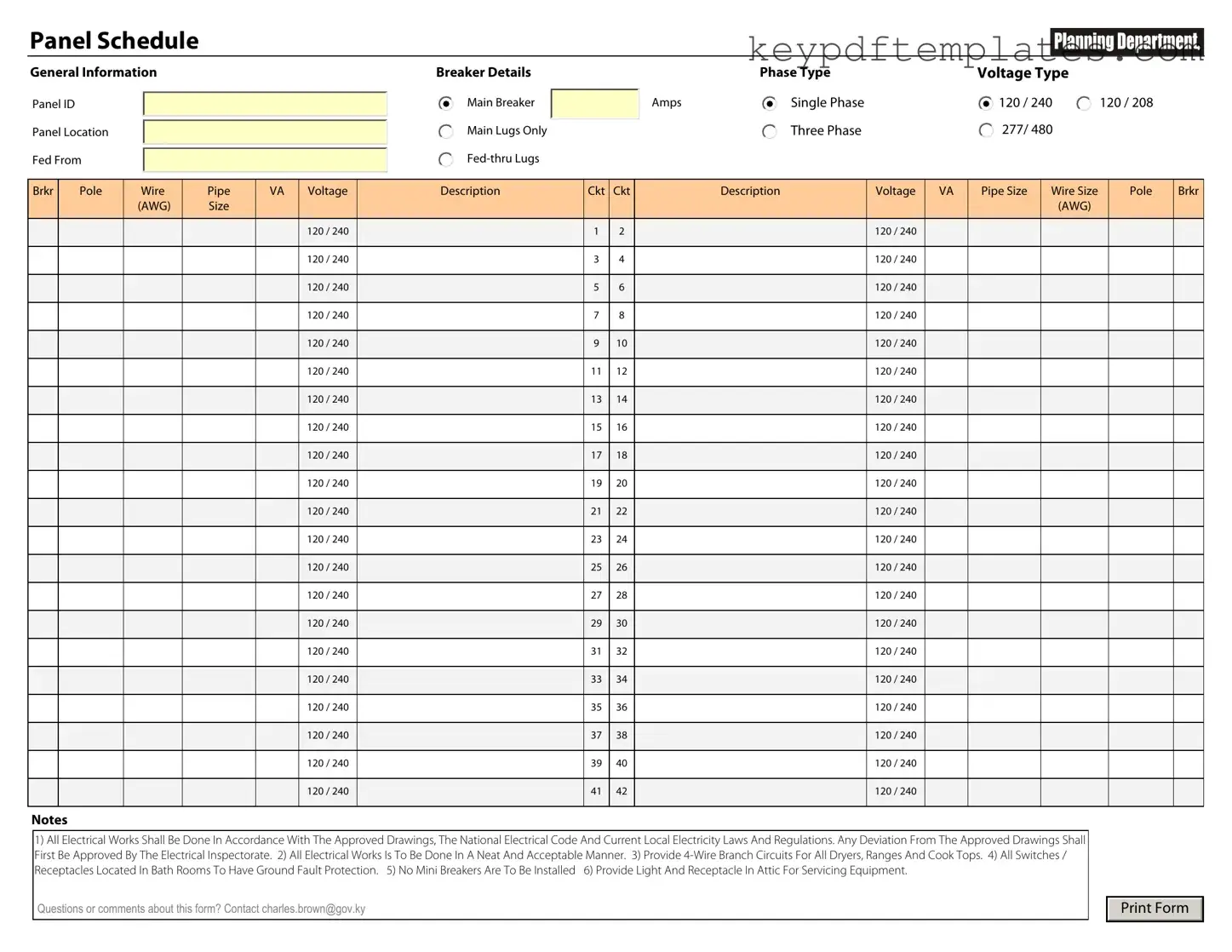Get Electrical Panel Schedule Form
The Electrical Panel Schedule form is a crucial document that outlines the electrical circuits and their respective loads in a building's electrical panel. This schedule helps electricians and engineers ensure that the electrical system is balanced and operates safely. By providing a clear overview of the panel's configuration, it aids in troubleshooting and future upgrades.
Modify Document Online
